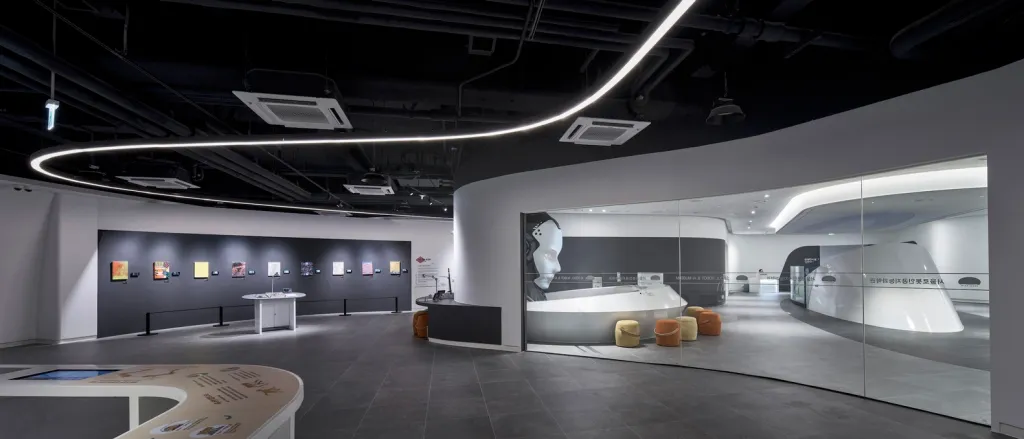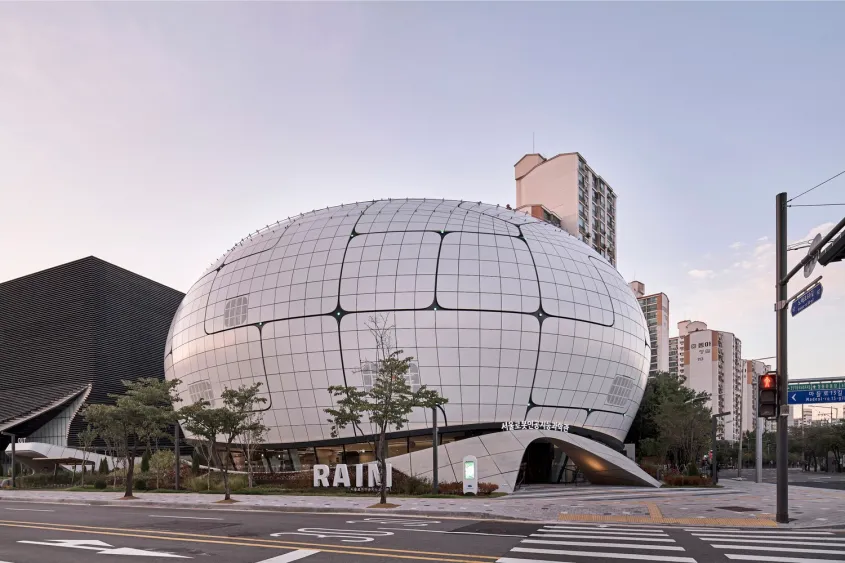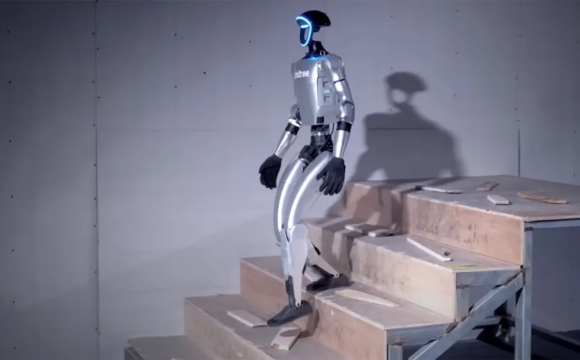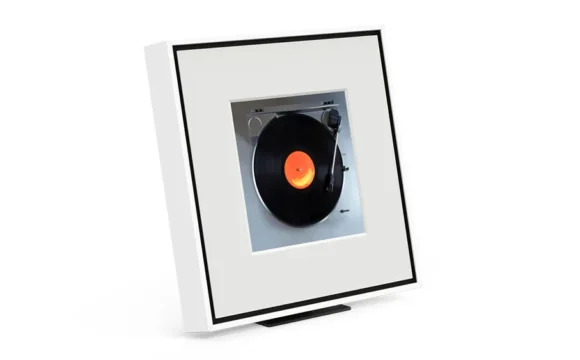พิพิธภัณฑ์แห่งใหม่ของโซลจะไม่มีการสัมผัสของมนุษย์ และนั่นคือจุดประสงค์ของมัน เมืองหลวงของเกาหลีใต้เพิ่งเปิดพิพิธภัณฑ์หุ่นยนต์และปัญญาประดิษฐ์แห่งแรกของโลก
พิพิธภัณฑ์หุ่นยนต์และปัญญาประดิษฐ์ (RAIM) ที่คล้ายกับยานอวกาศรูปไข่ที่ปกคลุมด้วยกระเบื้องสีขาวเรียบได้รับการออกแบบโดยบริษัท Melike Altınışık Architects แห่งตุรกี ที่นี่เป็นมากกว่าบทเพลงเทคโนโลยี “ทั้งหมดเกี่ยวกับการสร้างการเชื่อมต่อที่ลึกซึ้งยิ่งขึ้นระหว่างผู้คนและเทคโนโลยีที่กำลังกำหนดอนาคตของเรา เสนอประสบการณ์ที่น่าตื่นเต้นและมีความหมาย” สถาปนิกกล่าวกับ Dezeen
โครงสร้างยิ่งใหญ่ขนาด 79,650 ตารางฟุตถูกสร้างขึ้นให้มีความไหลลื่นมากที่สุด สะท้อนถึงธรรมชาติที่เปลี่ยนแปลงไปของเทคโนโลยี ภายใน ผู้เข้าชมสามารถมีส่วนร่วมในทุกสิ่งตั้งแต่การจัดแสดงไปจนถึงกิจกรรมเชิงประสบการณ์แบบลงมือทำ ทั้งหมดมีจุดมุ่งหมายเพื่อเชื่อมช่องว่างระหว่างสาธารณชนทั่วไปและสิ่งที่ถูกมองว่าเป็นวิทยาศาสตร์ที่เข้าถึงยาก ภารกิจของพิพิธภัณฑ์ไม่ได้หยุดอยู่แค่นั้น สถาบันหวังที่จะเชื่อมโยงมืออาชีพจากทั่วทั้งสถาบันการศึกษาและธุรกิจเพื่อดำรงตำแหน่งของตนในชุมชนที่กว้างขึ้น
นอกจากแถบหน้าต่างที่นำแสงสว่างเข้ามาในทางเข้าแล้ว พิพิธภัณฑ์สี่ชั้นยังปิดล้อมอยู่ทั้งหมด หุ่นยนต์บนชั้นล่างต้อนรับแขกและแจ้งให้พวกเขาทราบเกี่ยวกับสิ่งที่พวกเขาสามารถคาดหวังได้ก่อนที่จะพาพวกเขาดำดิ่งเข้าไปในพิพิธภัณฑ์ซึ่งพื้นที่จัดแสดงมีการผสมผสานของการแสดงแบบชั่วคราวและถาวร วิธีการนี้ช่วยเสริมประสบการณ์ที่ดื่มด่ำมากขึ้นเมื่อผู้เข้าร่วมสำรวจในแต่ละชั้น ในขณะเดียวกันก็ยังช่วยเพิ่มเทคโนโลยีอัจฉริยะที่หลากหลายซึ่งซึมเข้าไปในโครงสร้าง เป้าหมายสูงสุดคือการเบลอเส้นแบ่งระหว่างเทคโนโลยีของเครื่องจักรและความอยากรูอยากเห็นของมนุษย์ในลักษณะที่สะท้อนวัตถุประสงค์ทางวัฒนธรรมที่ใหญ่ขึ้นของพิพิธภัณฑ์
แต่ RAIM ไม่ได้มีแค่หุ่นยนต์ หุ่นยนต์ยังช่วยสร้างมันด้วย หนึ่งในตัวอย่างมากมายของวิธีการก่อสร้างขั้นสูงที่ใช้ในการสร้างพิพิธภัณฑ์ การออกแบบภายนอกที่ด฿แปลกตาหมายความว่าความแม่นยำนั้นมีความสำคัญสูงสุดระหว่างการประกอบและความช่วยเหลือของหุ่นยนต์ส่งผลให้มีเสถียรภาพโครงสร้างที่สูงขึ้นและลดข้อผิดพลาด เราทำได้แค่สามารถจินตนาการว่าต่อไปพวกเขาจะทำอะไร
จากบทความโดย Martin Lerma

Seoul‘s newest museum won’t have a human touch—and that’s the point. The South Korean capital just opened the world’s first space dedicated to robots and artificial intelligence.
Resembling an egg-shaped spaceship covered in smooth white tiles, the Robot & AI Museum (RAIM) was designed by Turkish firm Melike Altınışık Architects as more than a flashy ode to technology. “It’s all about building deeper connections between people and the technology shaping our future, offering experiences that are as exciting as they are meaningful," the namesake architect told Dezeen.
The gleaming 79,650-square-foot structure was built to be as fluid as possible, reflecting the shifting nature of technologies. Inside, visitors can partake in everything from exhibitions to more involved hands-on, experiential activities, all intended to bridge the divide between the general public and what’s perceived to be rarefied science. The museum’s mission doesn’t stop there. The institution hopes to connect professionals from across academia and business to cement its place in the broader community.
Aside from a band of windows that bring daylight into the entrance, the four-floor museum is entirely enclosed. Robots on the ground floor welcome guests and inform them of what they can expect before leading them deeper into the museum where exhibition spaces feature a mix of temporary and permanent displays. This approach allows for a more immersive experience as attendees explore each level while also enhancing various built-in smart technologies that permeate the structure. The ultimate aim is to blur the line between machine technologies and human curiosity in a way that echoes the museum’s larger cultural objectives.
But RAIM isn’t just about robots. Robots also helped build it. In one of many examples of advanced construction methods used to erect the museum. The exterior’s unusual shape meant that precision was paramount during assembly and robot aid resulted in higher structural integrity and the minimizing of errors. We can only imagine what they’ll do next.
From the article by Martin Lerma








